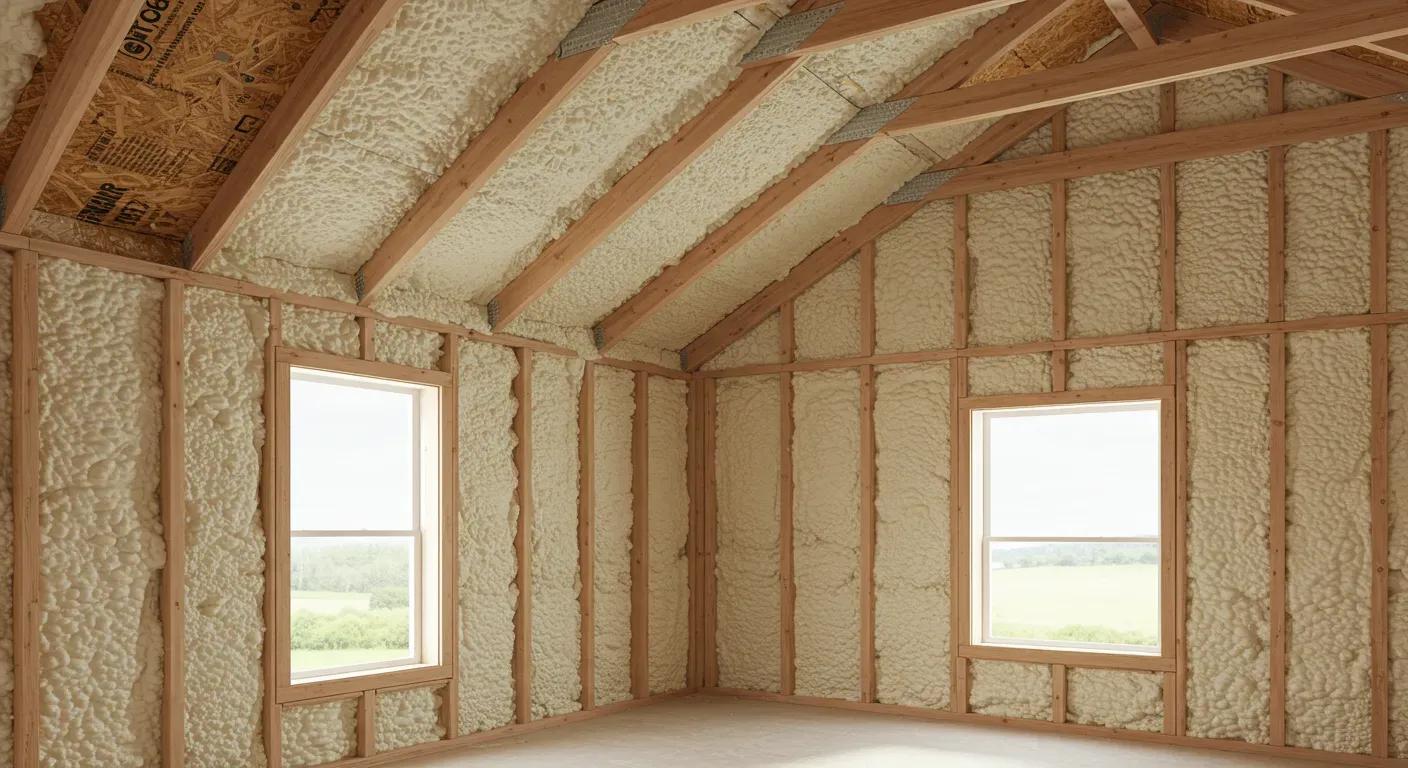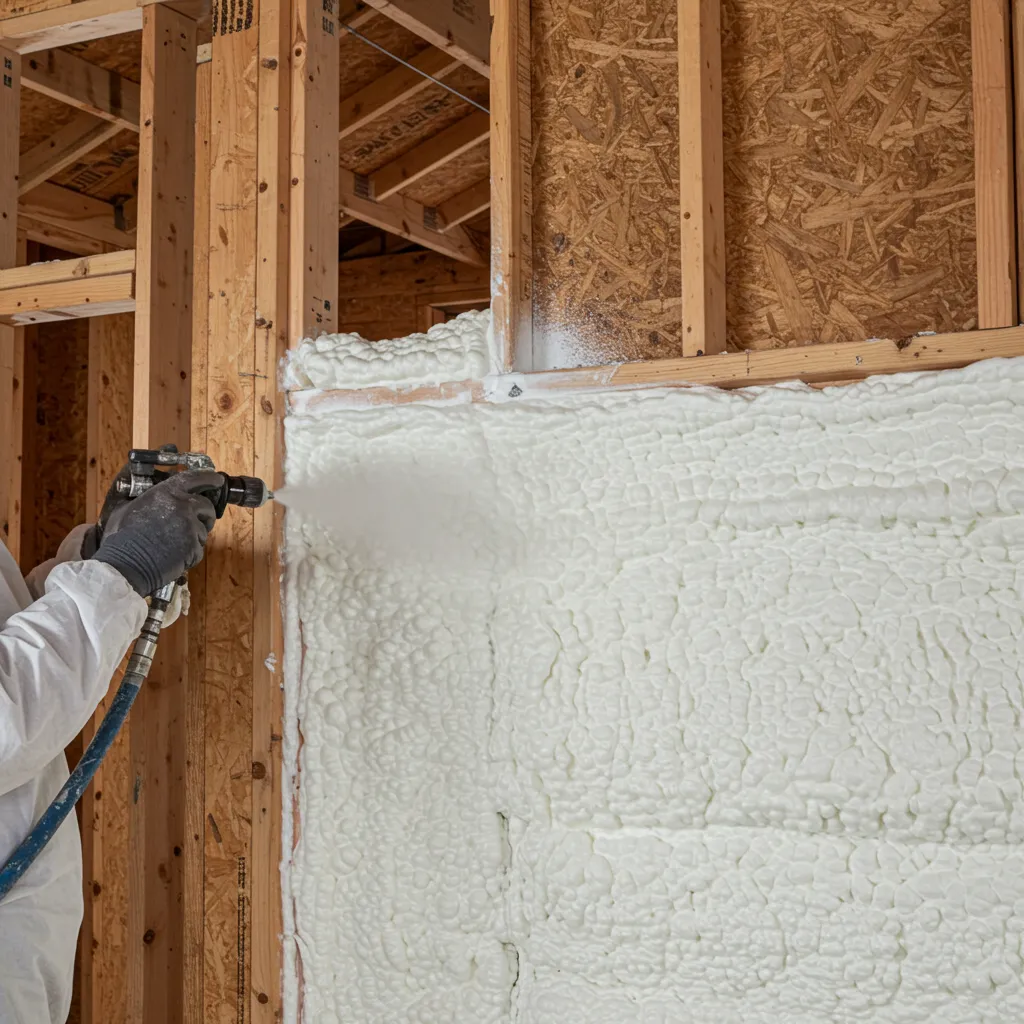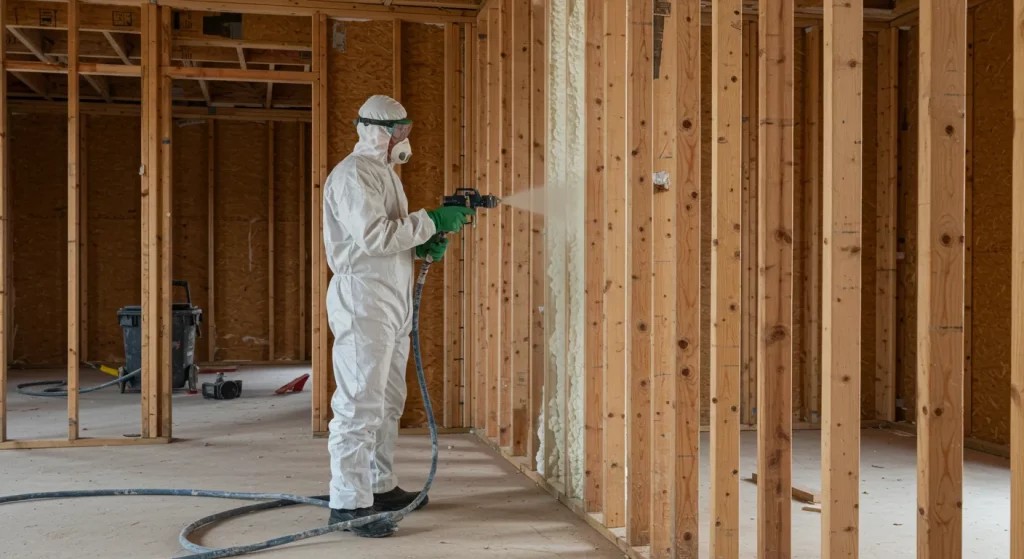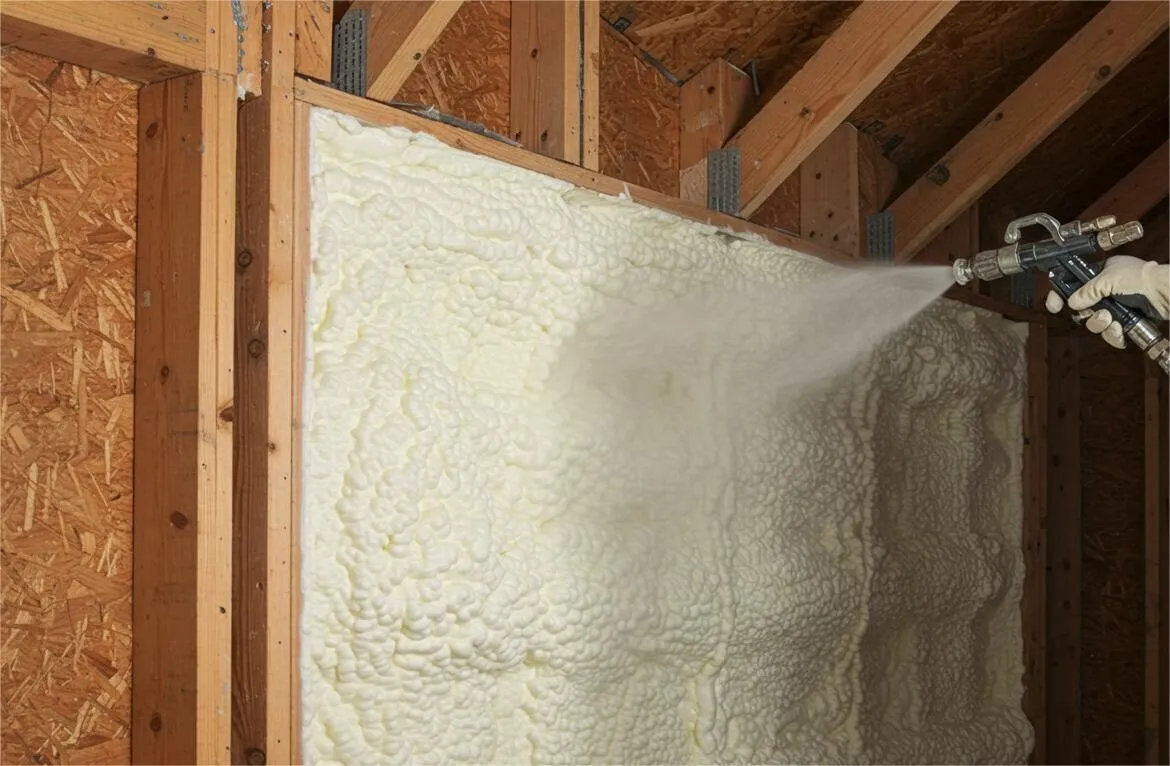

Proper ventilation after spray foam installation prevents moisture buildup, protects indoor air quality, and maintains building durability. Without it, trapped humidity can lead to mold growth, structural damage, and energy inefficiency. In Seattle’s damp climate, this issue is magnified by frequent rainfall and limited sunshine, which slows natural drying.
Spray foam creates an air-sealed environment. While this improves insulation performance, it reduces passive airflow. Mechanical ventilation becomes necessary to maintain healthy air exchange and regulate humidity. This article outlines the specific ventilation requirements, technical comparisons, and environmental considerations to help building owners and contractors make informed decisions.
Cascadia Spray Foam of Seattle provides this information based on direct field experience with spray foam systems across varied residential and commercial environments in the Pacific Northwest.
Spray foam insulation both open-cell and closed-cell forms a continuous barrier across walls, roofs, and foundations. Once installed, it limits outdoor air infiltration and prevents indoor air from escaping. Traditional “leaky” buildings rely on that air leakage for fresh air exchange. Once sealed, buildings need a new plan to manage indoor air.
Seattle experiences over 150 rainy days per year (NOAA, 2023). High humidity levels, if trapped indoors, can condense on colder surfaces and foster mold. Improper ventilation allows this cycle to continue undetected until visible signs or damage appear.
Bonus Tip: Install hygrometers post-installation to monitor indoor humidity in sealed zones. This helps adjust mechanical ventilation schedules before mold or odor issues arise.
| Condition | With Proper Ventilation | Without Ventilation |
|---|---|---|
| Indoor Air Quality | Balanced CO2 and oxygen levels | Elevated CO2, low oxygen |
| Humidity Control | Maintained 35%-55% | Often exceeds 65% |
| Mold Risk | Low | High |
| Structural Longevity | Preserved | Compromised by moisture |
| Energy Efficiency | Consistent | Declines due to condensation |
| HVAC System Strain | Minimal | Increased |
| Type | Description | Best For |
|---|---|---|
| HRV (Heat Recovery Ventilator) | Transfers heat between outgoing and incoming air | Homes needing energy recovery |
| ERV (Energy Recovery Ventilator) | Balances both heat and moisture transfer | Humid climates like Seattle |
| Exhaust Fans | Expels stale air from bathrooms/kitchens | Spot ventilation in specific areas |
| Whole-House Fans | Moves large volumes of air across entire home | Seasonal air flushing |
Bonus Tip: In Seattle, ERVs typically perform better due to year-round moisture control needs.

Seattle’s marine climate includes frequent moisture, moderate winters, and cool summers. These factors reduce the drying potential of enclosed wall assemblies. Spray foam prevents bulk water movement, but not vapor drive without ventilation.
In colder months, indoor activities (cooking, showers, occupants breathing) release moisture. Without ventilation, vapor condenses in attics and walls, especially behind closed-cell foam where drying potential is minimal.
Seattle Building Code (2021) mandates continuous mechanical ventilation in buildings with spray foam. Compliance includes:
| Specification | Open-Cell Foam | Closed-Cell Foam |
|---|---|---|
| Permeability (perm-inch) | 10-16 | 0.8-1.2 |
| Air Sealing Capacity | Moderate | High |
| R-Value (per inch) | ~3.6 | ~6.5 |
| Moisture Barrier Properties | Vapor permeable | Vapor retarder |
| Ventilation Need Post-Install | High | Very High |
Source: Oak Ridge National Laboratory, 2022 Spray Foam Data Sheet
Cascadia Spray Foam of Seattle provides the following services essential for proper insulation and ventilation balance:
Yes. Natural airflow is too limited post-installation to regulate moisture or CO2 levels. Mechanical ventilation is required.
Not in most cases. Ridge vents or soffit vents don’t work effectively with spray foam-sealed spaces. Upgrades are often necessary.
Keep indoor relative humidity between 35% and 55% year-round.
Activate within 24 hours of spray foam curing, especially in sealed areas like attics and basements.
For proper insulation and air quality planning, consult with professionals experienced in Seattle’s climate and building codes.
Contact Cascadia Spray Foam of Seattle:
Inspect and service mechanical ventilation systems every 6-12 months, especially filters and exhaust components.
Properly cured spray foam emits minimal VOCs after 24-48 hours. Ventilation during that period is critical.
Yes. Excess moisture can compromise R-values and cause internal condensation behind foam layers.
Musty smells, condensation on windows, mold spots in corners, or unexplained HVAC cycling.
Yes. Many ERV/HRV systems include seasonal settings for airflow and humidity adjustment.


